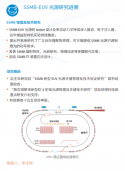Domestic SiC equipment, accelerating the rise
For a long time in the past, the domestic SiC industry relied heavily on imported equipment, and domestic companies started late. In recent years, driven by market demand, domestic SiC equipment has developed rapidly, and some "stuck necks" have been significantly alleviated, but many key bottlenecks have yet to be cleared.
In this context, the silicon carbide equipment industry chain is also accelerating its embrace of the capital market. From an industrial perspective, how do you view the current progress and breakthroughs of domestic equipment manufacturers?
Fu Youwen said that the SiC device industry chain mainly includes substrate preparation, epitaxial production, chip manufacturing, chip packaging and other links. The main processes include single crystal growth, substrate cutting, grinding and polishing, epitaxial growth, mask deposition, patterning, Etching, implantation, heat treatment, metallization, etc., involve a total of dozens of key semiconductor equipment. Due to the high melting point, high density, and high hardness of SiC materials, there are some special process control processes in the material and chip manufacturing process, such as single crystal growth by physical vapor transport method, slow substrate cutting, grinding and polishing, and epitaxial growth. The temperature required is extremely high and the target of high yield rate is required, and the chip manufacturing process requires high-temperature and high-energy equipment, etc., all of which require the addition of some special equipment as support, such as silicon carbide single crystal growth furnaces in the preparation of substrate materials, diamond wire multi-line Cutting machine equipment, epitaxial growth furnace, high-temperature high-energy ion implantation in chip manufacturing, annealing activation, gate oxide preparation and other equipment.
Crystal growth equipment: The preparation of high-quality SiC single crystal is the most important link in the entire industry chain, which directly affects the performance, reliability and manufacturing cost of SiC devices.
From the perspective of the entire industrial chain, crystal growth equipment is currently the link with the highest degree of localization of SiC.
Silicon carbide wafer manufacturing equipment: In addition to SiC substrates, the difficulty of wafer manufacturing is the key to the fact that domestic SiC MOSFETs have not yet been used in the main drive. In the future, the expansion of domestic SiC chip production will also be constrained by key equipment.
Due to the high hardness and high melting point of SiC materials, some special production equipment and processes are required - including high-temperature annealing furnaces, high-temperature ion implanters, SiC thinning equipment, back metal deposition equipment, back laser annealing equipment, SiC substrates and epitaxy Chip surface defect detection and metrology equipment, etc.
In terms of high-temperature ion implanters, major foreign manufacturers include Aifake, Applied Materials, and NISSIN. At present, the ion implanters of domestic enterprises Shuoke Zhongkexin have achieved batch applications in the field of silicon carbide. The equipment injects energy, beam size, and implantation. The technical indicators such as chip temperature are not much different from those of foreign countries.
High-temperature annealing is still required after ion implantation to activate the implanted ions. Major foreign manufacturers of high-temperature annealing furnaces mainly include Centrotherm, Nippon Vacuum, etc. At present, domestic enterprises such as CETC 48 and North Huachuang have mass-produced related equipment.
A high temperature oxidation furnace is required to prepare the gate oxide layer of SiC devices. Major foreign equipment manufacturers include Centrotherm, Toyoko Chemical, etc. At present, the equipment of domestic enterprises such as CLP 48 and North Huachuang can also be used to produce silicon carbide devices.
In addition, in recent years, domestic manufacturers have been trying to use domestic cutting, grinding and polishing equipment for back-end processing. By introducing new processes such as lasers, it is also helpful to introduce large-scale substrate manufacturing to reduce the cost of substrate materials and devices.
On the whole, the domestic equipment of the SiC device production line has begun to connect the dots, which will help further promote the rapid development of domestic silicon carbide chips. "With the rapid development of the SiC industry and the demand for independent supply, the country has gradually formed a full ecological industrial chain from equipment, materials, devices to applications, coupled with the introduction of a number of positive policies, which will help further promote the key development of the industrial chain. The equipment is self-controllable, safe and reliable, and there is huge room for growth of domestic silicon carbide equipment, while large size, high efficiency, and low damage are the future development trend of equipment in the industry." Fu Youwen replied.


